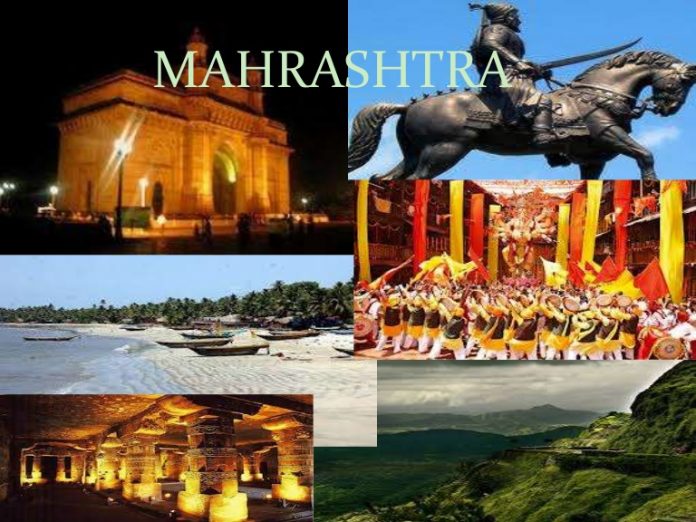In our antecedent blog, we had a detailed deliberation about the social and cultural, geographical and political traits of Maharashtra. If you haven’t read that already, click here – Know your State ‘Maharashtra’ – Part 1. Now in this blog, we will study about the history, environment and economy of the state.
Which state capital is India’s biggest financial and commercial capital? Do you know the state that has the largest economy in India? Where is the ‘Wine Capital of India’?
Maharashtra is the most urban state in India. It’s home to some of the most developed cities of India, such as Mumbai, Pune, Nasik, Nagpur, etc. Maharashtra is the financial, commercial and entertainment hub of India situated in the western region of India.
Let’s talk about the olden forgotten days of Maharashtra.
Table of Contents
HISTORY Maharashtra GK Notes:
The history of Maharashtra is quite rich as some of the great rulers and kings have ruled this region. All of them have left their indelible mark on the land. The great state has glorious historical events which can be traced back to the 3rd century BC. The tincture of the past has made the present equally bright.
Early History Maharashtra GK Notes:
- During the early period of 8th century, the present-day state of Maharashtra was divided between several Hindu kingdoms: Satavahana, Vakataka, Kalacuri, Rashtrakuta, Chalukya, and Yadava.
- A succession of Muslim dynasties ruled after 1307. By the mid-16th century, Maharashtra was again fragmented by Muslim rulers who fought with each other limitlessly.
- It was in the midst of that chaos that the great leader ‘Shivaji’ was born in 1627. Shivaji showed astonishing prowess by founding a large Maratha empire that shook Delhi-based Mughal rule to its foundations.
- The Peshwa Dynasty took the Maratha Kingdom to new heights of glory during their reign from 1712 to 1804.
- The Maratha Kingdom had to face a crumbling defeat by the hands of Ahmad Shah Abdali in the Third Battle of Panipat in the year 1761. The defeat reduced the power of the Maratha kingdom and confined it regionally.
British Rule Maharashtra GK Notes:
- The British rule in the state of Maharashtra was established only after the three Anglo-Maratha Wars.
- At that time the Mughal power had already crumbled. Therefore, the fall of the Maratha power at the hands of the British marked the beginning of British rule in India.
- Britain gained control of Bombay Island in 1661, and from the early 19th century onward the Marathas gradually succumbed to British expansion on the mainland.
- The region was governed by the Bombay Presidency which included most parts of northern Deccan.
- The princely states in the region included the modern cities of Nagpur, Satara and Kolhapur which accepted the British supremacy in return of maintaining local autonomy.
- In 20th century, the struggle for independence took shape which was led by radical nationalist Bal Gangadhar Tilak and the moderates like Justice Mahadev Govind Ranade, Gopal Krishna Gokhale, Pherozeshah Mehta and Shahu, Raja of Kolhapur, Dadabhai Naoroji, Dr. B. R. Ambedkar, Jyotirao Phule, all these social reformers who were all born in this region.
- The warning to the Britishers during the Quit India Movement was given in Mumbai and reached a climax in the transfer of power and independence in 1947.
Post-independence Maharashtra GK Notes:
After India gained its independence in 1947; the province became Bombay state (1950). Maharashtra went through a number of political changes. Several former princely states subsequently were merged into the new state. The modern state of Maharashtra came into existence in 1960, under the Bombay Reorganization Act in which the states of Maharashtra and Gujarat were legally given the status of separate states based on linguistic differences. The modern history of Maharashtra includes the period from the attainment of independence to the final separation of the states.
Now next we will scrutinize the environmental status of the state.
ENVIRONMENT Maharashtra GK Notes:
Maharashtra is an integral part of India. Maharashtra is a very popular place on the map of India and boasts of great culture in travel and tourism fields. The state is blessed with unique flora and fauna due to its location. The Western Ghats and the Arabian Sea make this place an abode for biodiversity.
Water Bodies
- Out of the five major rivers in India, three flow through the state of Maharashtra namely: Godavari, Krishna and Tapti. These rivers form river basins in the regions towards which they drain and cover the maximum fertile of the state.
- Godavari is considered a holy river originating in Trimbakeshwar in Nashik and it flows south-east across the Deccan Plateau. It is also called the Dakshina Ganga. The main tributaries of the river are- Indravati River, Wardha-Wainganga Rivers, Manjira River, KInnerasani River, Pranahita River, Parvara River, Purna River etc.
- Krishna River is one of the longest rivers in the country covers 8% of the total geographical area of India. The origin of this river is at Mahabaleshwar in Maharashtra.
- Maharashtra has a number of lakes. Out of all the cities in the state which are famous for the lakes, Thane stands out. The city has been named the ‘city of lakes’ having a reservoir of 30 lakes.
Dams
- There are around 1821 notable large dam and reservoirs in Maharashtra, some of the most famous dams are Khadakwasla Dam, Mulsi Dam, Panshet Dam, Radhanagari Dam, Wilson Dam, Ujjani Dam, Koyna Dam etc.
- The Jayakwadi Dam is one of the largest Dam of Maharashtra, situated in Jayakwadi village of Aurangabad. Jayakwadi project is used mainly to irrigate agricultural land of drought-prone regions of Maharashtra and the surrounding area has a garden known as Dnyaneshwar Udyan, one of the largest gardens built in the state and a bird sanctuary which is home for many species of resident and migrant birds.
- The Rubble-concrete Koyna Dam built on the Koyna River, Satara district in the Western Ghats of India. It is the largest dam in Maharashtra with a total installed capacity of 1,920 MW.
- The Ujjani Dam is also known as Bhima Dam as it is built over the Bhima River, located near Ujjani village in Solapur and Bhima River is a tributary of the Krishna River. Ujjani Dam and its large water reservoir, known as the Bhadalwadi Lake or Bhigwan Bird Sanctuary is one of the largest wetlands in India and protected under the Ramsar Convention site.
National Parks and Wildlife Sanctuaries
- Maharashtra has five National Parks namely well-known Tiger haunts of Tadoba, Gugamal and Pench, Navegaon & Sanjay Gandhi National Park in Mumbai metropolis. Out of these, Tadoba, Gugalmal and Pench are part of three Tiger reserves declared in Maharashtra.
- Maharashtra state is home to many rare species of flora and fauna in 41 wildlife sanctuary. Wildlife safari in important sanctuaries of Maharashtra includes Bharmragarh Sanctuary, Chaprala Wildlife Sanctuary, Bor Wildlife Sanctuary, Nagzira Wildlife Sanctuary, Radhanagari Wildlife Sanctuary, Karnala Bird Sanctuary and Bhigwan Bird Sanctuary.
Let’s shift to the last aspect i.e. economic stability of the state.
ECONOMY Maharashtra GK Notes:
Maharashtra is the most industrialised state in India. The state capital of Maharashtra, Mumbai is India’s biggest financial and commercial capital of India. The state has played a significant role in the country’s social and political life and widely considered as a leader in terms of agricultural and industrial production, trade and transport, and education. Maharashtra is one of the most developed and prosperous Indian states and continues to be the single largest contributor to the national economy with a share of 15% in the country’s GDP. The economy of Maharashtra is the largest in India, with a gross state domestic product (GSDP) of ₹28.78 lakh crore and has the country’s 13th-highest GSDP per capita of ₹207,727877.
GDP: ₹ 28.78lakh crore
Rank as per GDP: 1st
Growth (as per GDP): 6% (2018-19)
Per Capita GDP: ₹207,727
Rank (per capita GDP): 11th
Sector-wise GDP: Agriculture: 13%, Industry: 31%, Services: 56% (2018-19)
Revenues: ₹ 3.49lakh crore
Unemployment: 5.3% (2019)
EDUCATION Maharashtra GK Notes:
Maharashtra’s literacy rate is one of the highest of all the Indian states, with more than four-fifths of the population able to read and write. The discrepancy between male and female literacy has reduced since the beginning of the 21st century. The state provides free compulsory education for children between ages 6 and 14. The National Defence Academy near Pune is a premier institution that provides cadet training for India’s defence forces. There are many institutes in Maharashtra for research and development in explosives, armament technology, vehicle research, and naval, chemical, and metallurgical laboratories.
SPORTS Maharashtra GK Notes:
Sports in Maharashtra are an important part of the culture of the state. Kabaddi, Hockey, Kho kho, Badminton, Cricket and Table tennis are the popular sports of Maharashtra. The Commissionerate of Sports and Youth Services, Pune, governs the sporting activities in Maharashtra.
Here are some more interesting facts about MAHARASHTRA:
- Mumbai is popularly known as the city that never sleeps. This is because the city is almost always alive, even late in the nights. Popularly known as the New York of India, the city boasts of excellent infrastructure and has the latest technologies induced in development.
- The Maharashtra Bhushan is the highest and prestigious award presented annually by the government of Maharashtra state in India.
- In Shani Shingnapur situated in Maharashtra, people in this village have been living in houses with no doors for generations. This is because they believe that whoever steals anything from this place will incur the wrath of Shani God and will have to pay for his/her sins very dearly. There is no police station in this village either.
- Nashik in Maharashtra state is known as the ‘Wine Capital of India’ over the past decade.
- India’s first gold refinery was built in Shirpur in Maharashtra.
Therefore, this blog provided a deep and exhaustive study about the state of Maharashtra that will helps in your preparation for competitive exams like SSC CGL, CDS, Civil Services and NDA etc.
In the next blog, we would be discussing some interesting facts and trivia about the state of Manipur. Click here for Know your State – ‘Manipur’.
THANK YOU




